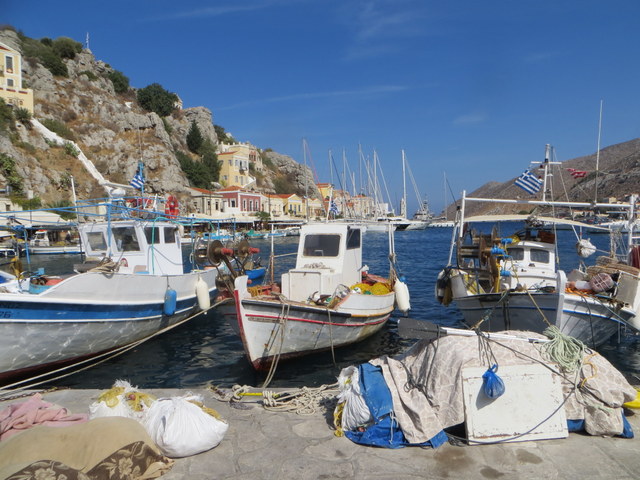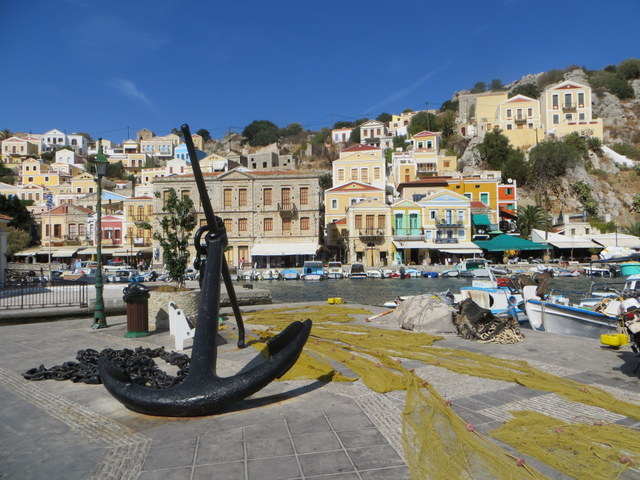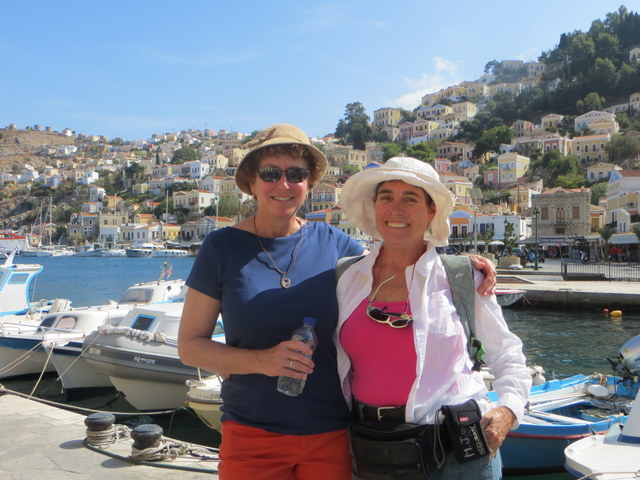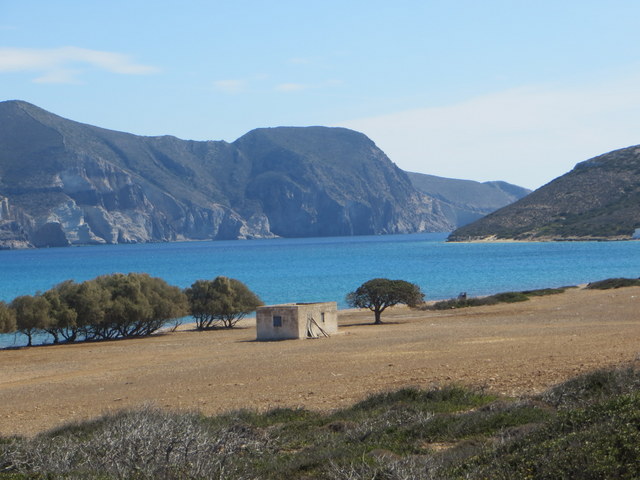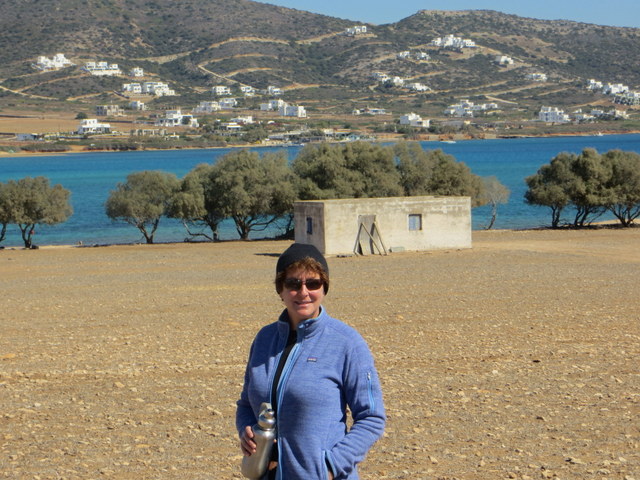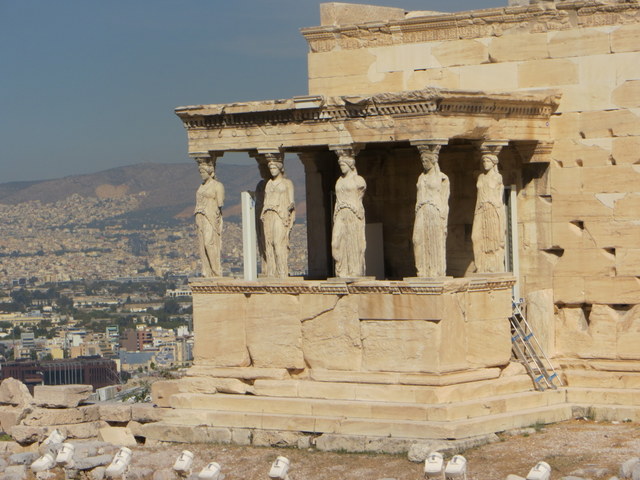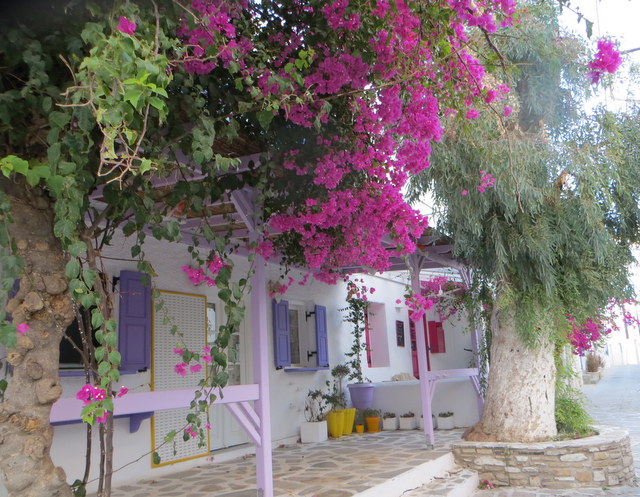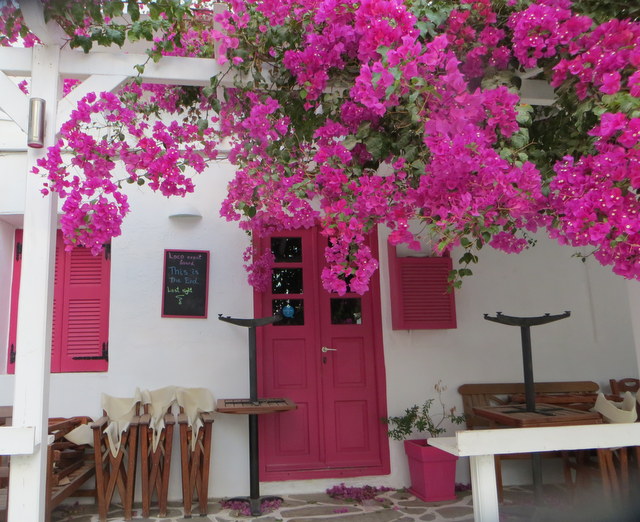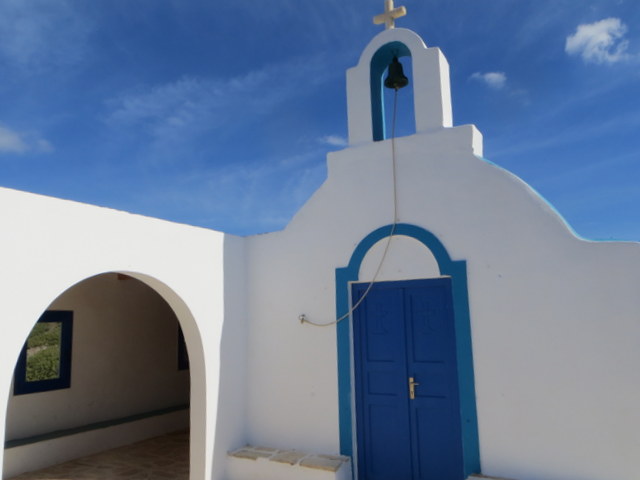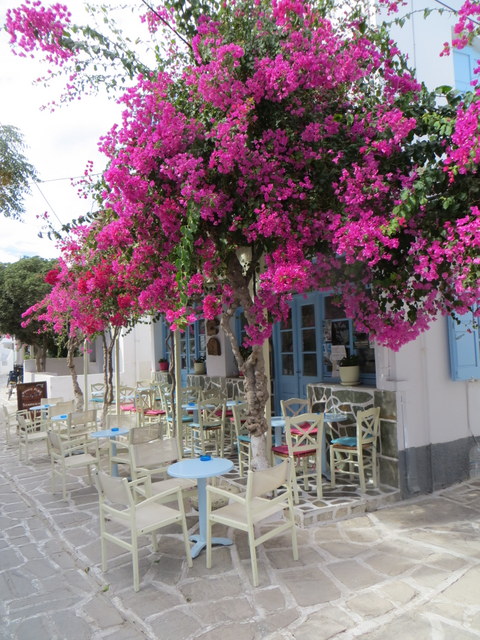
We are anchored in Mandraki Bay on the small island of Kastellorizo (officially known as Megisti but also referred to as Meis in nearby Turkey), the easternmost island of Greece. Kastellorizo is only one mile from KaÈ™, Turkey, where we will leave Sabbatical III for the winter.
We left alone from Symi for the island of Rhodes on October 19, leaving behind our friends on Sassoon who were soon to head north to Datca, Turkey. Since the city of Rhodes did not promise secure anchoring places, we planned to head down the eastern shore of this very large (80 km. long) island for the small bay in front of the ancient town of Lindos. We expected that the high island of Rhodes would block any wind but were pleasantly surprised by gusty winds of 15-25 knots that enabled us to sail along the entire coast. Along the way we passed “Eclipse,†the second largest private yacht in the world and owned by the Russian oligarch Roman Abramowich, while shadowed by his security boats.
Lindos, founded by the Dorians in the 10th century BC, is a very pretty town of stone dwellings set on narrow, winding alleys leading up a steep hillside. At the very top is the old “Acropolis†that most tourists reach on donkey. The tourist season may be almost over in much of Greece, but not in Rhodes. They come on ferries and buses every day to Lindos to sunbathe and swim, have lunch, buy souvenirs, and ride to the Acropolis on a donkey. The ferries come at 10 am and are mostly gone by 5 pm. The bay offered a great view but indifferent anchoring for Sabbatical III on a mostly rocky bottom and some hours of incredibly bad rolling. The roll could be so bad that we made it a point to be off of the boat as much as we could.
Twice we walked up to the coastal road and took the public bus to the city of Rhodes for the day, a one hour trip. We spent our time exploring the old walled city and really enjoyed it. We were particularly moved by our visit to “La Juderia†– the Jewish Quarter – where a Jewish community dating to ancient times lived and thrived. The Romaniote Jews who arrived in the second century BC were joined by Ladino speaking Sephardic Jews escaping the Spanish Inquisition in the early 1500s. The Sephardic Jews were welcomed by the Ottoman Sultan to Salonika, Izmir, and other places under Ottoman rule, as well as to Rhodes. In 1930, the Jewish population of Rhodes reached 4000 but quickly fell as economic times worsened and particularly after the imposition of racial laws by the Italian government which ruled Rhodes and the other Dodacanese Islands starting in 1912 (after the Turkish-Italian War). The leading destinations of the migrants were Rhodesia, Belgian Congo, and the USA. In 1943, Rhodes was occupied by the Germans, and on July 23, 1944, 1673 members of the remaining Jewish community were arrested and then deported to Auschwitz, along with the Jews of the island of Kos (Cos). All but 150 were murdered. Forty or so of those arrested held Turkish nationality and the day after the mass arrest, the Turkish Consul-General protested vociferously that his nationals, some of whom had only the remotest proof of Turkish nationality, must not be deported. They were not deported and most survived the remainder of the war in Rhodes, and the Turkish Consul is honored at Yad Vashem The oldest Torah scrolls of the community were hidden in a mosque by the Grand Mufti (whose grandfather-in-law was Jewish) and returned to the community at the end of the war. The Kahal Shalom Synagogue, built in 1577 and one of six synagagues that once existed in La Juderia, is beautifully restored and still in use by the handful of Jews that remain. It also houses a wonderful museum detailing the centuries of Jewish life in Rhodes.

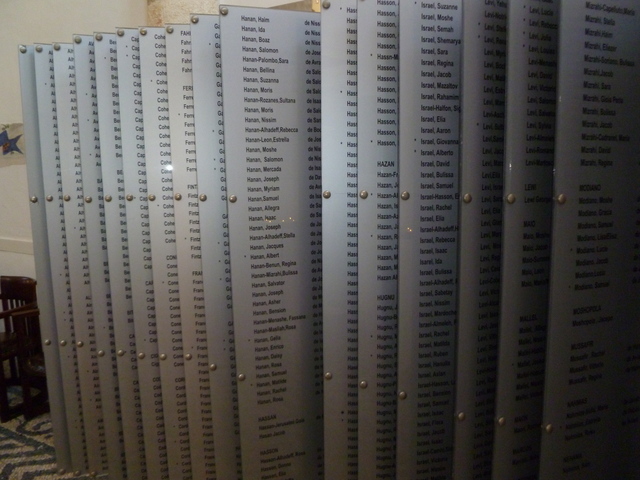

When we came to shore in Lindos, we always anchored our dinghy some distance off-shore. I would let Laura out of the dinghy in shallower water, and then would walk the dinghy out further to knee deep water and set an anchor. Wading to shore one morning I felt something catch my ankle and lower leg – probably a derelict rope I thought. I lifted by leg out of the water and discovered all eight legs of a good-sized octopus holding tightly to my lower leg. That was a bit of a shock. I kicked my leg to get him off, but he stayed put and I almost lost my balance in the effort. I tried again and he let go and fell back into the water. The owner of the Skala Taverna saw what had happened and asked me to catch the octopus. He offered me a long pole that was like a hoe and encouraged me to look for him near where I was standing. I looked down and there he was, his color camouflaged to blend in with the rocky sea bottom, but still visible in the crystal clear water. So I grabbed him with the business end of the pole and lifted him out of the water. He immediately hit me with a stream of water and fell back into the sea. I tried again with the same result. Not wanting to miss our bus to Rhodes and get any wetter, I handed the pole back to the restauranteur who was in the process of rolling up his pants and removing his shoes. I doubt that the octopus was caught because I saw him jetting away along the bottom.
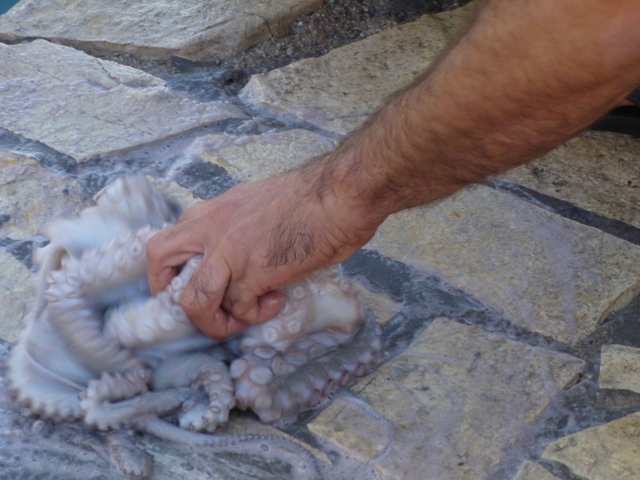
On October 23, we did an overnight passage to Kastellorizo. This small island is so remote from the rest of Greece that it is about the same distance to Israel as it is to Athens. The small town is very cute with brightly painted houses and a ruined castle. The water is perfectly clear and large sea turtles prowl in the bay. Kastellorizo once had 10,000 inhabitants but the first half of the 20th century was very unkind, and most of the homes in the town lay in ruins at the end of World War II and most of the inhabitants wound up in Australia. There has been a resurgence in the past couple of decades as many “Kazzies,†as they are known in Australia, have returned to fix up their family properties on the island. There are now more than 200 permanent residents, some small hotels, and a small daily ferry from Kaș, Turkey brings groups of tourists for the day. On Monday, we will check out of Greece and head into the marina at Kaș, Turkey just a couple of miles away.
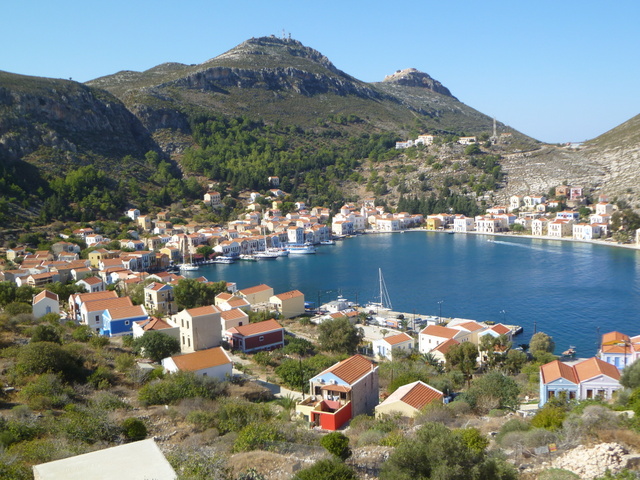



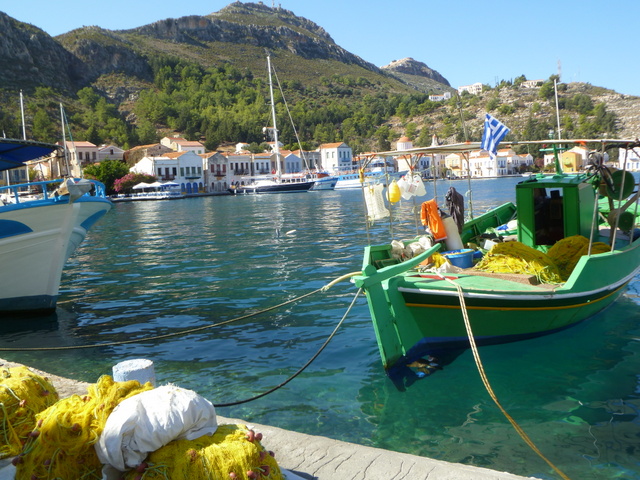
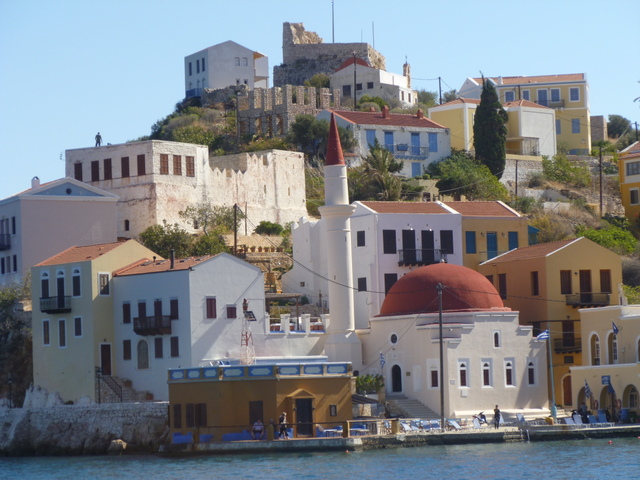

M.


